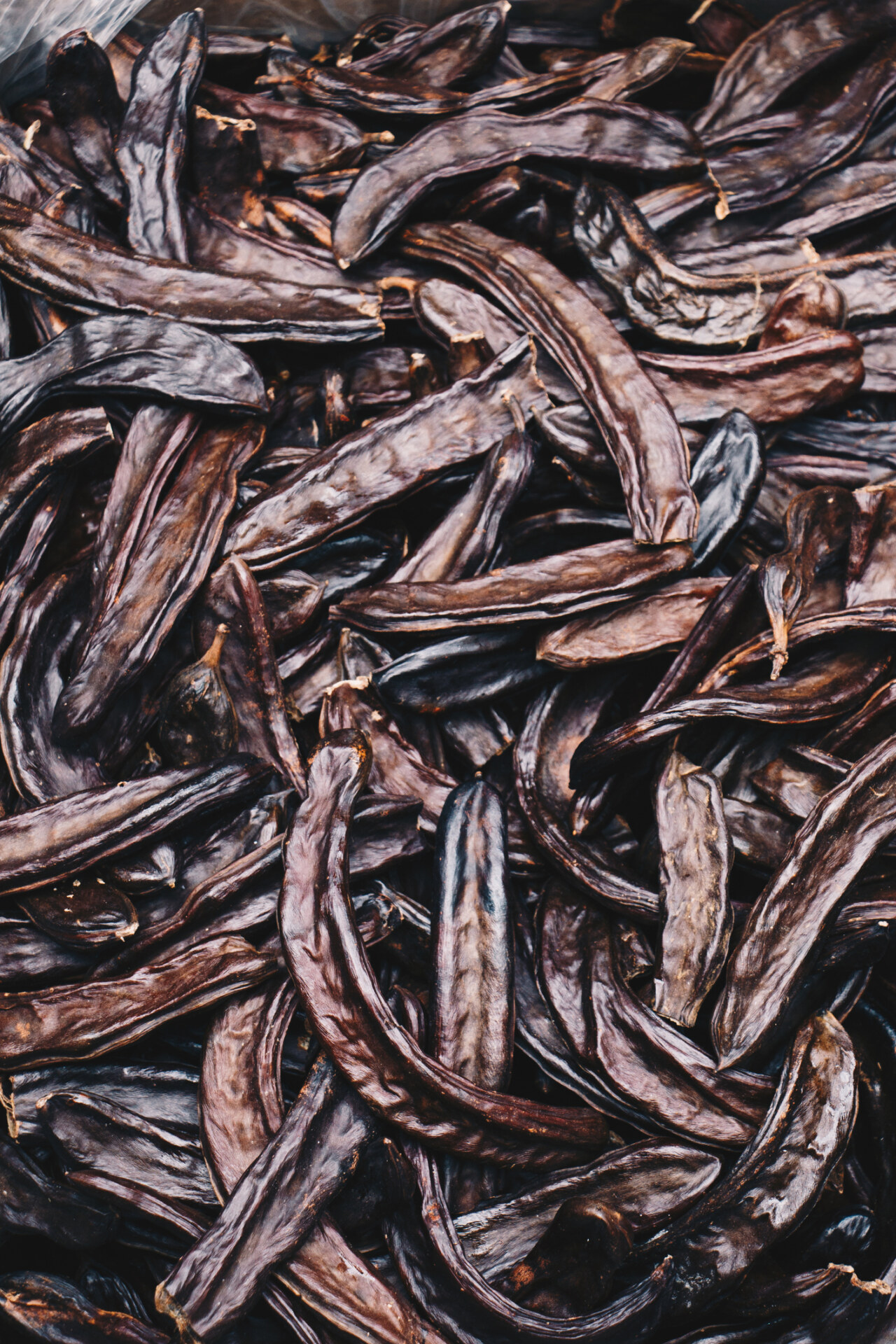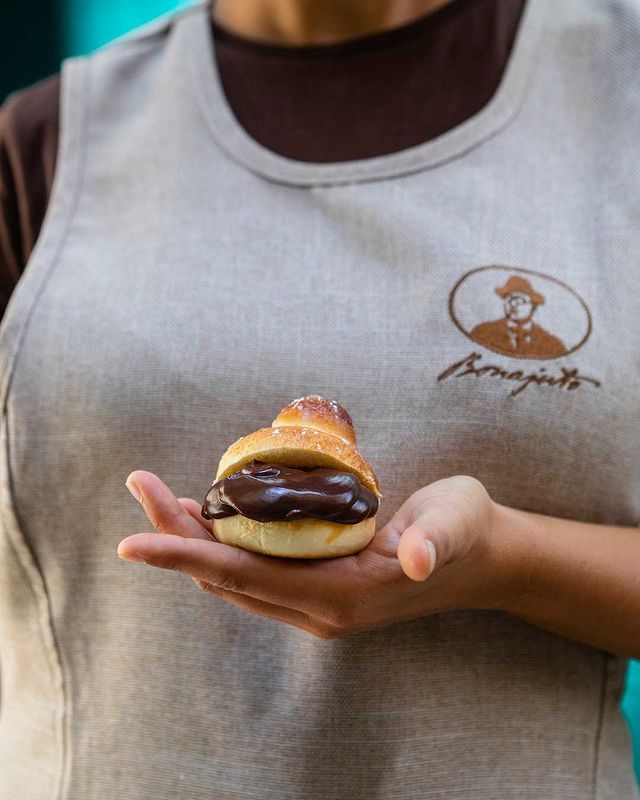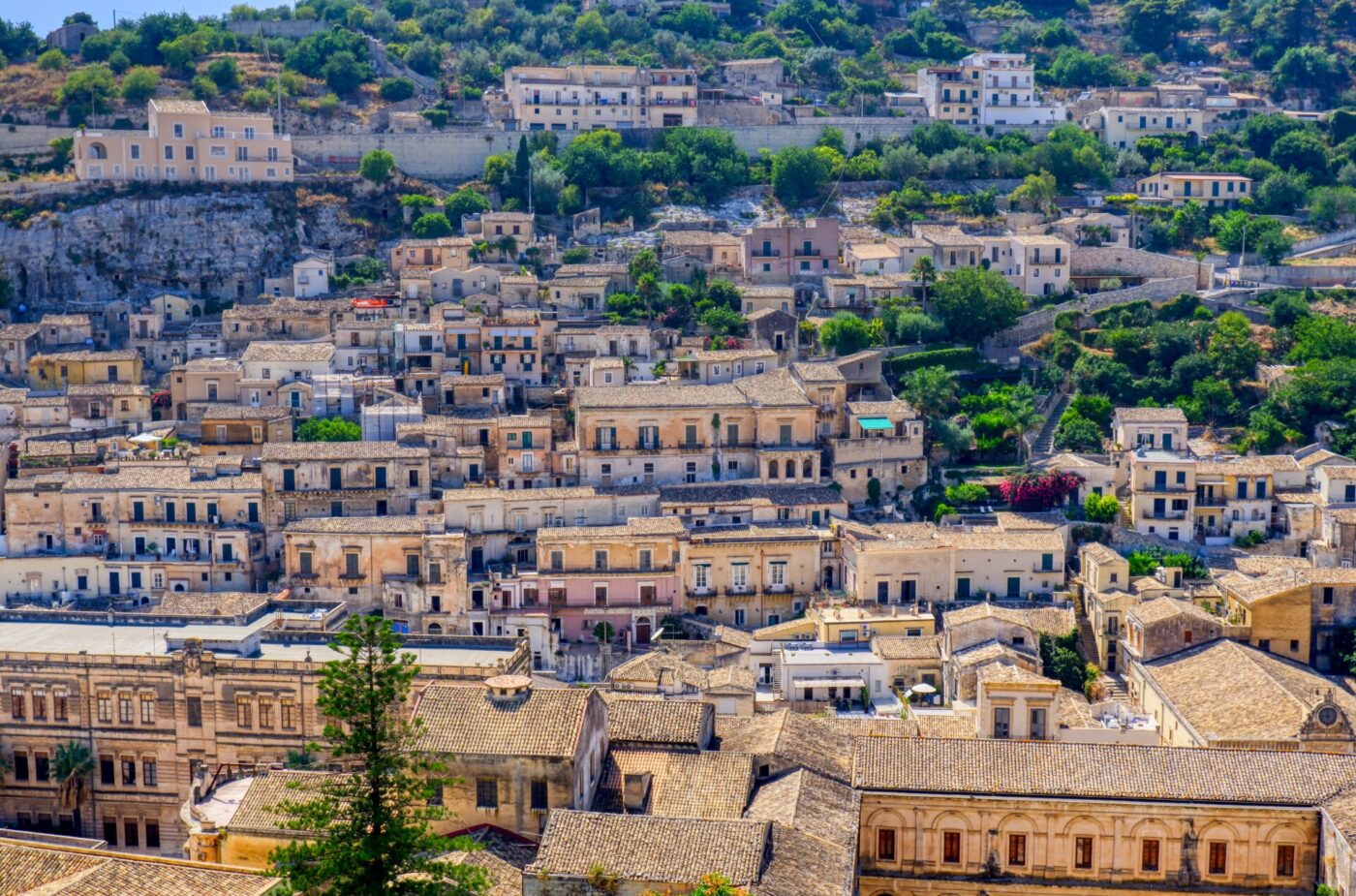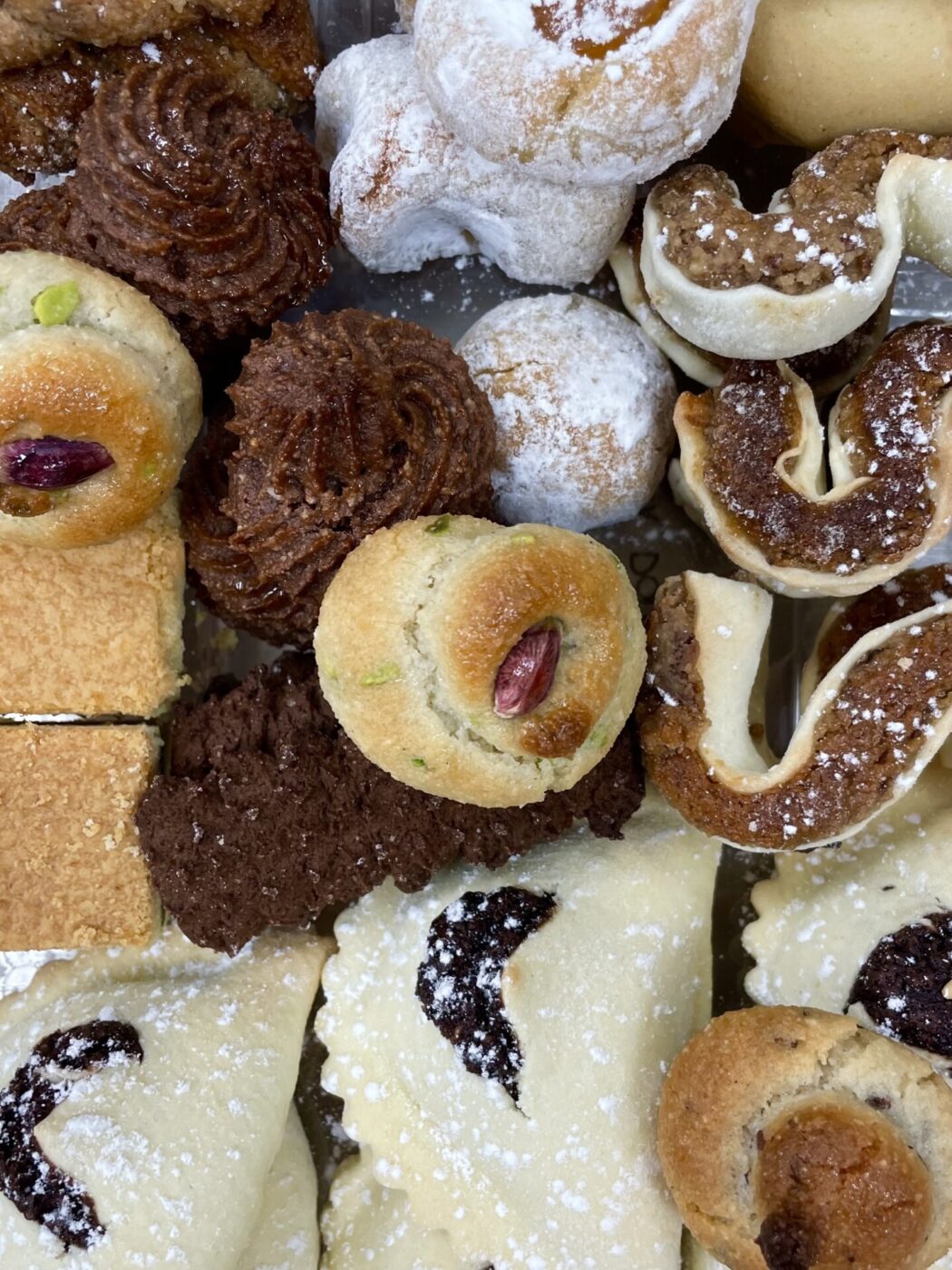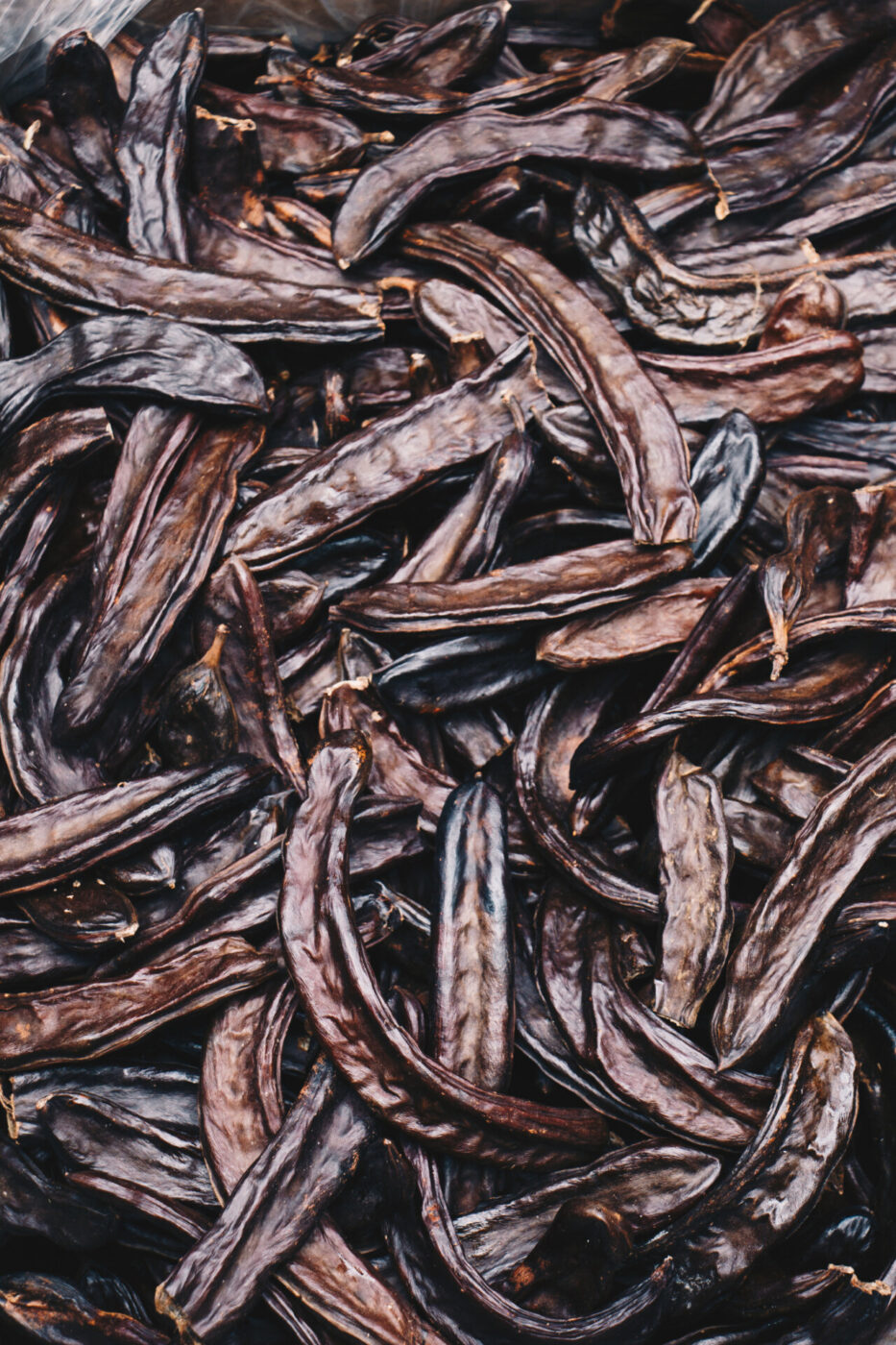We have just filled our bellies with fresh sheep’s milk ricotta at a local masseria and are driving back to my hometown of Rosolini in southeastern Sicily when my cousin, Salvatore, peels off the road and parks at a gated casale (farmhouse) announcing, “I’m going to show you the oldest carob tree in Europe.”
“Here? The oldest carob tree in Europe, and there’s not even a sign? It’s just living its multi-millennia life on someone’s property–no entry fee, no guard, no tourists?” There is no path, no track to this tree. All I know is that we are near Modica.
Salvatore opens the gate and sees the look on my face: “Non ti preoccupare,” he says “Don’t worry, I know the guy.” Just like the ricotta maker earlier that morning, I’m learning that my cousin knows a lot of guys. We walk across a golden field of sunburnt grass on what is already a sweltering September day. It’s barely 8 AM, and my clothes are soaked in sweat.
But my attention shifts when I see an impossibly-green tree, glistening like El Dorado amidst other, centuries-old trees on the estate; its gnarled trunk communicates its biblical antiquity. From a distance, it looks like what I would have called a “broccoli tree” as a bored child on long car rides: bunches of tight curls hang so low to the ground you can barely see the trunk until you arrive under its canopy.
Upon closer examination, the curls are hundreds of thin branches garlanded with elongated, rose-petal-sized leaves. It’s quite large, with a trunk circumference of 18 metres and a total height of over ten. It’s no wonder carob trees are an agricultural staple, providing much needed shade for livestock under Sicily’s punitive sun. I long to lounge under the tree’s canopy while sucking on the honey-caramel sweet pods, but they won’t appear until later in the year.
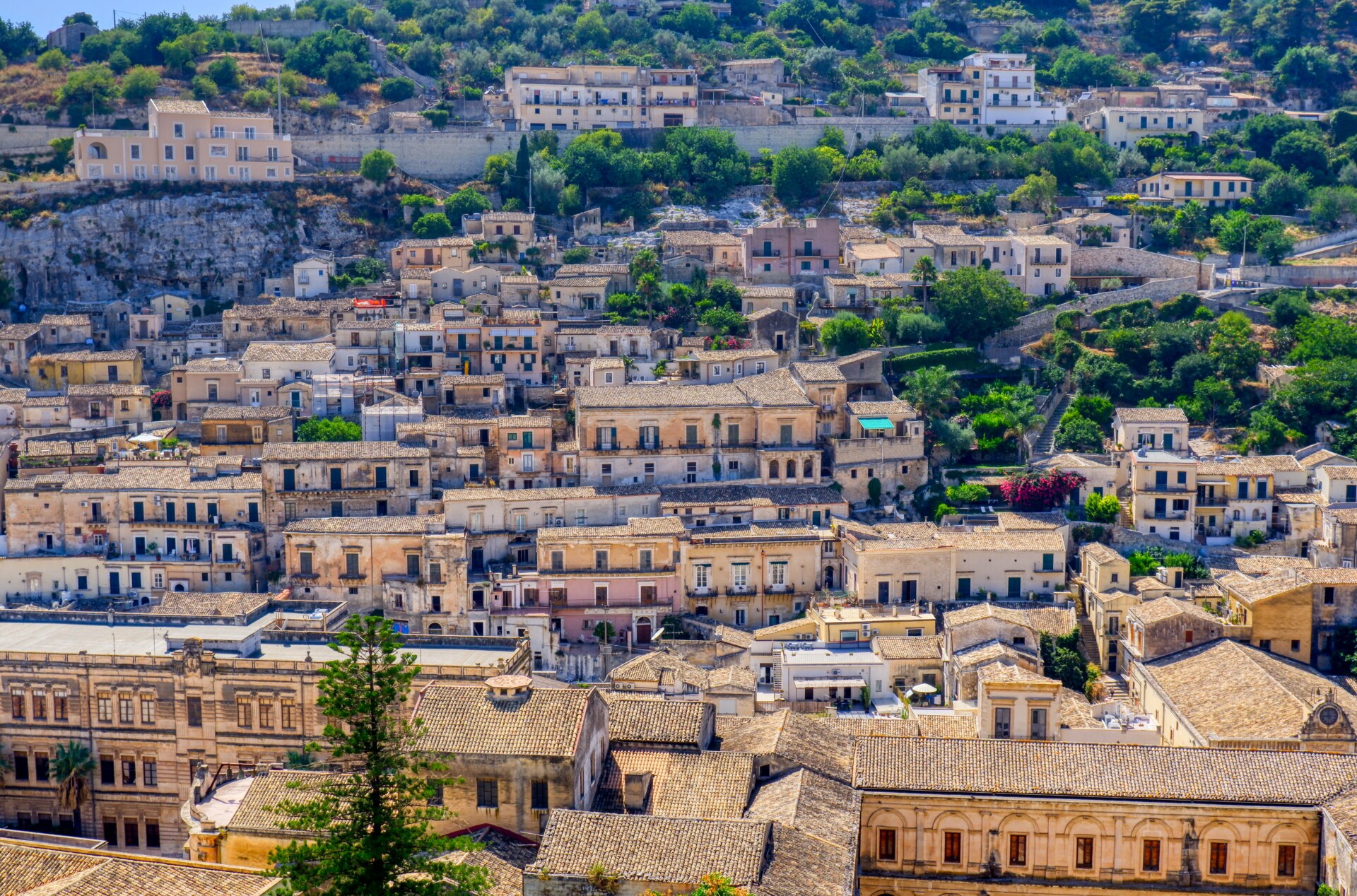
Modica
CARATS, FAIRIES, AND LOVERS: SICILY’S HISTORY WITH THE CAROB
Although it grows wild globally, the carob is native to the Mediterranean region and parts of South America. Much like the olive tree and fichi d’india (prickly pears), the carob tree is a ubiquitous presence on the island of Sicily. The carob is, in fact, a legume–the only legume that grows on trees–and has been cultivated in this area for nearly 4,000 years. While it was the Greeks who brought the tree to Sicily in 8 BCE, it was centuries later, during the Arab conquest in the 9 CE, that carob became recognised as a prized crop; its protein-rich pulp and sweetness delighted the conquerors. Already a culture rich in agricultural methods, the Arabs planted carob groves throughout the island, and, within a few centuries, carob became a valuable export. Today, more than 70% of Italy’s carob production is in the province of Ragusa in southeastern Sicily, particularly in the province of Modica.
Carob was (and is) valued for its many uses. In the Middle Ages, carob seeds, because of their supposed uniform weight, were used by Arab traders to weigh everyday commodities such as grain, but also gold, silver, and diamonds. The word we know today as “carat” comes from the Italian “carato”, which originates from the Greek for “carob seed”. Industrialisation, and actual scales, ended the carob seed’s value as a weight, but the word is still used in the industry.
In the home, carob had nothing to do with gems, but was just as valuable to everyday life.
Even today, herbalists claim that carob tinctures can heal the lungs from respiratory illnesses like the common cold and are also a cure for the runs (bring carob powder and water to a boil, add a swirl of honey, drink). The carob tree also plays a role in Sicilian folklore and superstition. Fairies have been known to dance beneath carob trees, and it was believed that if a young woman placed a sprig of carob leaves under her pillow, she would dream of her future husband. For the donne da fuora (some would call them streghe, witches), the carob was also a common ingredient in magical spells and rituals; however, very little written history survives of these practices.
CAROB: THE POOR MAN’S CHOCOLATE
What can still be found today is countless Sicilian uses for the legume. Carob has a sweet, caramel-honey flavour, like chocolate, but without the bitterness or caffeine. Unlike cocoa, it can be eaten unprocessed straight from the tree. As such, carob powder is a popular ingredient in many Sicilian desserts, including gelato, cassata, and sometimes cannoli shells (to give it a darker pigment). In places like Sicily that have suffered through famines, earthquakes, and war, it has been called “poor man’s chocolate”–although, unlike chocolate, the seeds and pods of the carob provide both natural sugars and high levels of protein. The husks are still used in stock feed thanks to these minerals and protein.
Today, chocolate is a staple in the cupboard, but it was not always so. My mother, born during the allied bombardments of Sicily in 1943, longed for chocolate as a child, but it was simply not a luxury her widowed mother could afford. There were a few kind Allied soldiers who happily shared their stash with local children, but there were no impulse purchases at the supermarket (what supermarket?). Mum remembers those few little squares with nostalgia. She savoured those tiny squares that came wrapped in wax-paper. More often, however, she would chew on a dried brown carob pod, sitting beneath an evergreen tree while her mother worked in the orchard.
Carob is harvested in late August to early September and the fruit ripens for 60 days. During the harvest, the tree already bears the flowers for next year’s fruit. To harvest, workers knock on carob pod clusters with wooden sticks, gathering the fruits on nets spread beneath the trees. However, the need for farmers to boost their short-term income has led to the neglect and destruction of carob orchards to make room for fields of wheat. Yet, with the price of carob more than quadrupling in the last two years, many are replanting the trees, sadly acknowledging that there may not be another generation willing to wait 30 years before they produce the prized pods. It is heavy labour, physical, and many of Sicily’s young people are opting instead for higher education and work on the mainland.
Carob’s reputation as a poor substitute for chocolate has changed little: in the last decades, carob has been much maligned, and for that, I blame the health food craze of the 1970s and 80s. Whether it covers a rice cake, is incorporated into “sugar-free” muesli bars, or is used as a chocolate chip alternative in ice cream, we have been convincing ourselves for decades that carob is healthy. As a student in the 80s, I ate carob-coated anything in the hopes that it had fewer calories than the real thing. But by continuously comparing it to chocolate, we don’t do the legume proper justice
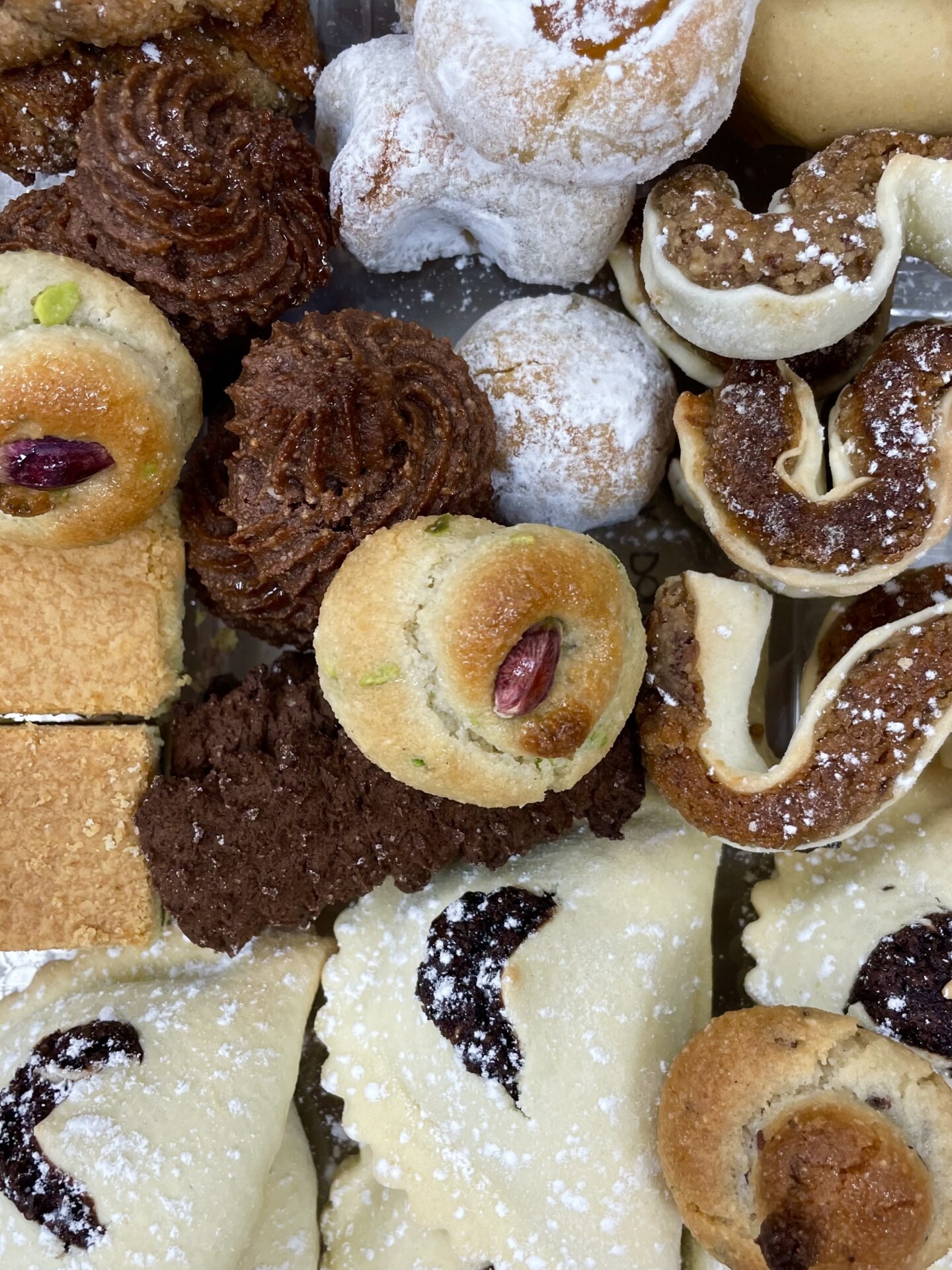
DOING JUSTICE TO CAROB: SICILIAN RECIPES AND PREPARATIONS
The best flavour of the carob comes from toasting the pods whole. Typically around 10-30 centimetres long, carob pods boast a skin both leathery and shiny, like a thin, long, shrivelled sausage. Despite their dried appearance, the pods come to life after an hour in the oven. They are exceptional when drizzled with honey. Alternatively, you can remove the seeds after toasting and grind them in a coffee mill to use in and add flavor to so many Sicilian preparations–from pudding to biscuits to candies–to let the flavour shine.
Unlike French crème Anglaise (which gets its thickness from a hearty dose of cream), Sicilian gelato uses milk and starch to create its renowned texture. While most gelaterias use inexpensive wheat starch, culinary maestros like Corrado Assenza at his renowned Caffè Sicilia in Noto incorporate carob bean flour as a thickener and emulsifier instead to produce creamy ices. Carob syrup (made by reducing the pulp with water) is also used as a liquid sweetener and can be an alternative to maple syrup, agave, or honey. Cold-processed Modican chocolate is often enhanced with carob for a more complex flavour, and Sicily’s oldest chocolate shop, Antica Dolceria Bonajuto in Modica, makes a superlative, unctuous hot chocolate thickened with the powder.
While carob is used mostly in sweets, you should not be surprised to learn that, in a country with more than 400 pasta shapes, carob has a place at the dinner table. Although used less and less, Sicilians use a combination of carob flour and semolina to make cavatelli (known locally as cavateddi or lolli), a tasty, brown-hued, gluten-free pasta that couples beautifully with rich ragu.
If all that wasn’t enough, during carob harvest in autumn, if the conditions are just right, the carob tree produces one more spectacular product: the carob mushroom (funcia ri carrua in the Sicilian dialect). Growing in clusters along the base of the trunk, these fungi have a distinctive, fan-shaped appearance. Their texture is firm and meaty, often compared to that of meat or fish. The rare mushroom is priced at upwards of 50 euro/kilo, if you can find it.
On the drive back home from our visit to that massive carob tree, I marvel at the antiquity of my island. A short drive on local roads will have you winding past 18th-century stone houses and castles, some remodelled and turned into wineries, others crumbling and longing for attention. You find Greek temples in Agrigento and troglodyte caves in Mangiapane, inhabited until the 1950s, surrounded by prickly pears, wild fennel, and caperberry bushes draped over ancient stone fences.
I don’t know if the carob tree we visited on that summer day is, in fact, the oldest in Europe. Given Sicily’s long history, its extreme climate, culture, food, mythology, and language, I wouldn’t be surprised. The majestic carob tree has long held sway over the beliefs and superstitions of the island’s people, from learning the name of a future love to fairies frolicking beneath its lush leaves, and it’s about time non-Sicilians show the multitudinous carob the appreciation it deserves.
